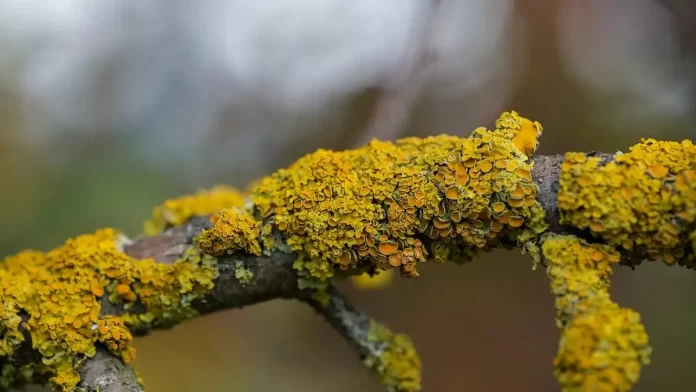In the vast and intricate tapestry of the natural world, few organisms embody the essence of symbiosis as elegantly as lichens.
These enigmatic organisms are unique and fascinating in their own right, forming a remarkable partnership between fungi and algae or cyanobacteria.
Although often overlooked, lichens play a crucial role in various ecosystems, and their incredible adaptability and resilience have sparked the curiosity of scientists and nature enthusiasts alike.
In this article, we delve into the captivating world of lichens, exploring their diverse forms, ecological significance, and the incredible secrets they hold.
What are Lichens?
Lichens are not single organisms but rather composite life forms that arise from a mutually beneficial relationship between a fungus (usually from the Ascomycota or Basidiomycota phyla) and one or more photosynthetic partners, either green algae or cyanobacteria. The fungus provides a supportive structure and protection, while the photosynthetic partner contributes food through photosynthesis.
Diversity of Lichens: Lichens display an astounding diversity of forms, colors, and habitats. From the crustose lichens that closely adhere to rocks and tree bark to the fruticose lichens that hang gracefully like miniature forests, there are over 20,000 known species of lichens, and scientists believe many more remain undiscovered.
Adaptability and Resilience: Lichens are remarkably adaptable organisms, capable of thriving in a wide range of environmental conditions. They can be found in extreme environments such as deserts, polar regions, and high-altitude mountains, where few other organisms can survive. This ability to colonize and persist in seemingly inhospitable habitats makes lichens ecological pioneers.
Lichen Symbiosis: Lichens represent an exquisite example of mutualistic symbiosis. They consist of a fungal partner, known as the mycobiont, which provides a protective structure, and an algal or cyanobacterial partner, called the photobiont, which conducts photosynthesis to produce food. This symbiotic relationship benefits both partners, enabling them to thrive in harsh environmental conditions.
Morphology and Growth Forms: Lichens come in a wide range of shapes and sizes. They can take the form of crustose, foliose, fruticose, or squamulose growth forms, each adapting to various habitats and ecological niches. Their ability to grow on rocks, trees, soil, and even man-made surfaces makes them remarkable pioneers of colonization.
Lichens and the Environment
Lichens play vital roles in various ecosystems, contributing to soil formation, nutrient cycling, and habitat creation. In areas with poor soil quality, lichens are often the first to colonize, initiating the process of soil development and paving the way for other plant species.
Bioindicators of Environmental Health: Lichens have earned their reputation as bioindicators, reflecting the overall health of the environment. They are sensitive to air pollution, especially sulfur dioxide and heavy metals. By monitoring the presence and abundance of certain lichen species in an area, scientists can assess air quality and detect changes in pollution levels.
Soil Formation and Erosion Control: Lichens play a vital role in the early stages of soil formation, breaking down rock surfaces and contributing to the accumulation of organic matter. Their ability to bind soil particles also helps in erosion control, preventing landslides and promoting stability in fragile ecosystems.
Nitrogen Fixation: Some lichen species are nitrogen fixers, meaning they can convert atmospheric nitrogen into a usable form, enriching the soil and benefiting neighboring plants.
Biodiversity and Habitat Importance:
Lichen Richness and Distribution: The biodiversity of lichens is astounding, with an estimated 20,000 to 30,000 species known worldwide. Different lichen species prefer specific habitats, ranging from arid deserts to high-altitude mountains, adding to their ecological significance.
Indicator Species: Some lichen species are considered habitat or microhabitat indicators. Their presence or absence can provide valuable insights into the overall health and characteristics of an ecosystem.
Lichens and Humans
Traditional Uses: Indigenous cultures worldwide have employed lichens for various purposes. They have been used for dyeing fabrics, as food sources during times of scarcity, and in traditional medicine for treating ailments.
Medicinal Potential: Modern research is unveiling the medicinal properties of certain lichen compounds. Compounds such as usnic acid and atranorin have shown antimicrobial, antioxidant, and anticancer properties, paving the way for potential therapeutic applications.
Lichens in Science and Research
Biochemistry and Ecology: Lichens have become valuable subjects of scientific research. Studying their biochemistry and ecology has revealed fascinating insights into their symbiotic relationships, adaptations to extreme environments, and ecological functions.
Environmental Monitoring: As bioindicators, lichens provide an essential tool for environmental monitoring. Their presence or absence can help assess the impact of pollution or climate change on ecosystems.
Threats to Lichens
Air Pollution: Air pollution, particularly from industrial emissions and urban development, poses a significant threat to lichens. Sulfur dioxide and other pollutants can be toxic to lichens, leading to declines in their populations.
Habitat Loss: Destruction of natural habitats due to deforestation, urbanization, and agriculture can severely impact lichen populations. Certain species are highly specialized and can only survive in specific microhabitats.
Conservation Measures
Protected Areas: Identifying and designating protected areas that encompass diverse lichen habitats is essential for their conservation.
Air Quality Regulations: Implementing and enforcing air quality regulations can help reduce pollution levels and protect lichen communities.
Public Awareness and Education: Raising awareness about the importance of lichens in ecosystems and the need for their conservation can garner public support and participation.
Conclusion
Lichens may be small and often overlooked, but their significance in ecosystems and potential applications in medicine and environmental monitoring are nothing short of monumental.
As we continue to uncover their secrets and learn more about these remarkable organisms, it becomes clear that safeguarding their habitats and protecting their biodiversity are essential for maintaining the health and balance of our planet.
Embracing lichens as valuable indicators of environmental health and exploring their biochemistry for medicinal purposes are exciting prospects for the future, reminding us that the world of lichens is an endless reservoir of knowledge and wonder to be discovered.
